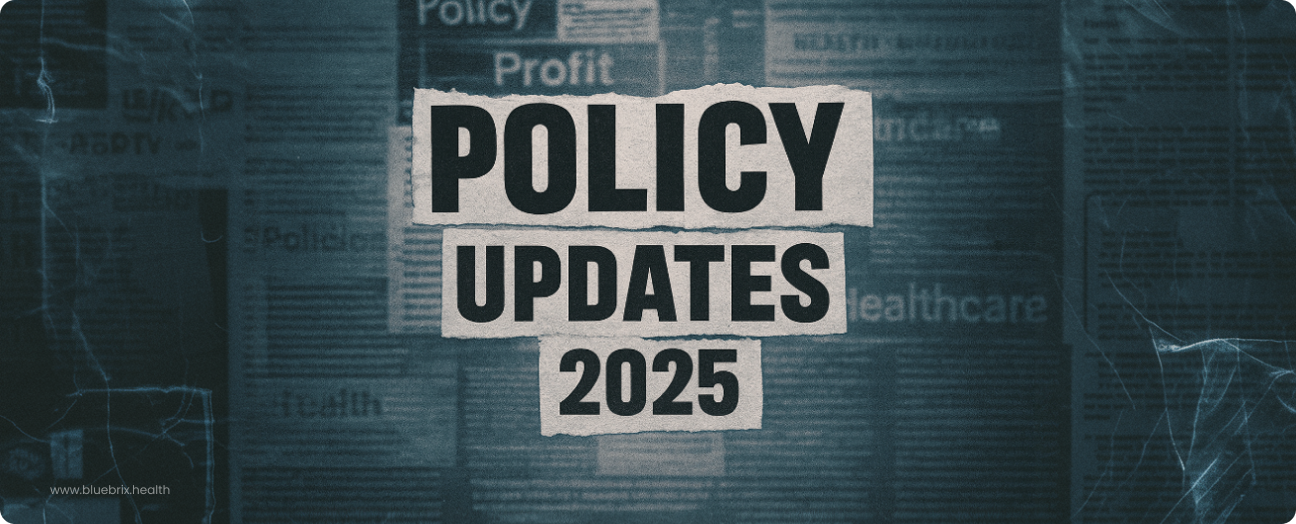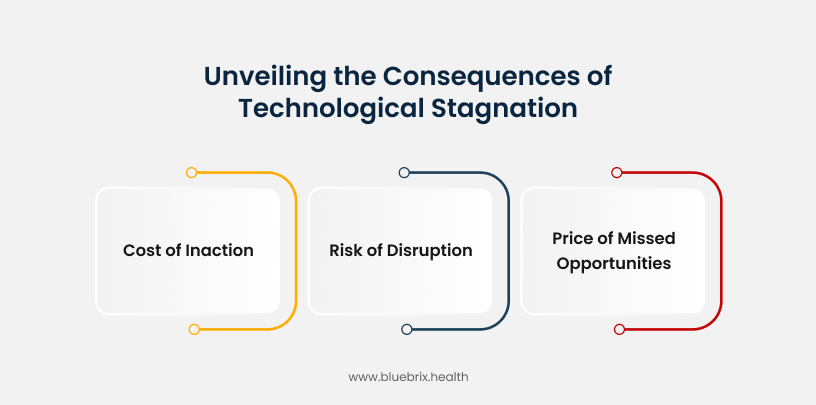Healthcare’s future is a current reality defined by the choices you make today. The shift to value-based care, the rise of interoperability, and the demand for a connected patient experience are not just trends; they are strategic imperatives that demand a modernized approach. This guide reveals the three reasons your tech stack might be holding you back and how forward-thinking healthcare leaders can turn policy into profit with intelligent technology.

The Shifting Healthcare Policy Landscape
Your organization’s ability to thrive in this new era will be defined by one thing: a seamless, strategic approach to data. With new government mandates, the evolution of value-based payment models like the upcoming end of ACO REACH, and a renewed focus on patient-centered care, the old way of doing things is no longer an option. This guide will explore the key policy shifts that are shaping the industry and how you can position your organization at the forefront of this transformation.
Reason 1: Outdated Systems Can’t Keep Pace with New Policies
Federal mandates are not just creating administrative work; they are fundamentally reshaping how you get paid. A key example is the CMS-HCC V28 risk adjustment model. This update, and others like it, shifts payment from a volume-based model to one that rewards precise, highly specific documentation of patient complexity. It adds new HCC categories and removes thousands of ICD-10 codes from the risk adjustment calculation, directly impacting your organization’s revenue.
This rapid, unpredictable change is a constant in the current landscape. As the ACO REACH model is scheduled to end in 2026 with no clear replacement yet announced, organizations face a critical need for technology that can adapt.
Without a flexible platform, you face:
- Risk of Revenue Loss: Inaccurate or nonspecific coding due to outdated systems can lead to a significant drop in risk adjustment factor (RAF) scores, directly reducing your reimbursement.
- Increased Administrative Burden: Manual processes for identifying, educating, and auditing for V28 changes create a massive workload for your teams, pulling them away from patient care.
A future-ready platform automates these updates, ensuring your EHRs and RCM services are always aligned with the latest rules, so you can focus on patient care, not policy compliance.
Reason 2: Lack of Interoperability Is a Financial Liability
The ONC Cures Act is designed to end “information blocking” by mandating seamless data exchange. This isn’t just about sharing a patient record; it’s about enabling a “health app economy” that gives patients on-demand, secure access to their electronic health information (EHI). While this empowers patients, it poses a challenge for legacy systems that are not built on modern APIs. The result is:
- Hindered Care Coordination: Fragmented data across different systems prevents care teams from having a complete view of the patient, leading to missed diagnoses and costly care gaps.
- Missed Opportunities: You can’t leverage new technologies like AI-powered analytics or telehealth effectively if your data is locked in silos. This limits your ability to predict patient risks and engage them proactively.
A modern platform built on FHIR APIs acts as a central hub, breaking down data silos and enabling the real-time care coordination and data access required to succeed in this new era.
Reason 3: Ineffective Care Coordination Leads to Unnecessary Costs
New payment models like the CMS Transforming Episode Accountability Model (TEAM) are putting a spotlight on care coordination for high-cost surgical episodes. These models hold hospitals financially accountable for the cost and quality of care for a defined episode, from the procedure itself to a 30-day post-discharge window. To succeed in this model, you need a system that can:
- Track and Predict Costs: You must have real-time visibility into the entire episode of care to identify cost drivers and potential risks before they lead to losses.
- Automate Care Pathways: Manual handoffs between inpatient, post-acute, and home-based care providers are a recipe for complications and costly readmissions, which directly impact your reimbursement.
A future-ready platform provides a unified view of the patient journey, automating transitions of care and supporting proactive interventions. It empowers your teams to manage the entire episode, ensuring you meet quality measures and avoid financial penalties.
The Strategic Imperative: Beyond the Buzzwords
The true value of a platform like blueBriX extends far beyond standard features like integrated EHR and RCM. It’s about securing a competitive and financial advantage in an unforgiving market. It’s about a platform that unifies your data, automates complex workflows, and equips your teams with the insights they need to deliver superior outcomes.
Consider the hidden costs that outdated systems impose on your business:
- The Cost of Inaction: Every day spent with fragmented data is a day your competitors are pulling ahead. It means higher administrative overhead, delayed revenue, and a greater risk of non-compliance.
- The Risk of Disruption: As the Change Healthcare cyberattack proved, resilience is not a luxury; it is a necessity. A modern, cloud-native platform provides the robust security and business continuity your organization needs to withstand crises and protect your revenue streams.
- The Price of Missed Opportunities: With rapidly changing models, your ability to adapt to new programs is directly tied to the flexibility of your technology. Without real-time data and seamless interoperability, you cannot fully leverage the power of AI, precision medicine, or new care models.

By partnering with blueBriX, you are not just investing in technology—you are investing in resilience, efficiency, and a future where your data becomes your most powerful asset. The most critical component of this advantage is the support for EHR-agnostic interoperable care coordination. By enabling every touchpoint—from the patient’s first appointment to their post-discharge recovery—you can eliminate the information gaps that lead to costly errors and inefficient care. A truly modern platform turns your data into a proactive tool, enabling you to manage care transitions, ensure seamless communication across your network, and ultimately, improve patient outcomes in a way that is both clinically and financially sound.
The time for a reactive approach is over. The future of healthcare requires a strategic partner, not just another vendor.
Frequently Asked Questions
The Centers for Medicare & Medicaid Services (CMS) has finalized several changes for the 2025 Physician Fee Schedule. Key updates include:
- Payment Cuts: A reduction in the conversion factor, leading to an average payment rate cut of 2.93%.
- Telehealth Restrictions: Geographic and site restrictions for most telehealth services have been reinstated, limiting them to rural areas and specific medical settings.
- Behavioral Health Exceptions: Behavioral health telehealth services remain exempt from geographic restrictions and can continue to be delivered via audio-only platforms.
Starting in 2025, a new Condition of Participation standard requires home health agencies to develop and consistently apply an “Acceptance to Service Policy.” This policy must outline how the agency evaluates patient referrals to ensure they can provide the necessary care, helping to improve the referral process and reduce care delays.
Effective July 1, 2025, Medicare-certified home health agencies are now required to collect and submit Outcomes and Assessment Information Set (OASIS) data for all patients, regardless of their payer (e.g., Medicare, private insurance, etc.).
The 2025 final rules for Medicare Advantage and Part D introduce several changes aimed at improving patient care and program integrity:
- Behavioral Health Access: CMS now requires MA plans to include Marriage and Family Therapists (MFTs) and Mental Health Counselors (MHCs) in their network adequacy standards to improve access to behavioral healthcare.
- Dual Eligible Special Needs Plans (D-SNPs): New federal requirements mandate that integrated D-SNP plans provide a single, unified member ID card that serves as the ID for both Medicare and Medicaid plans.
- Medicare Prescription Payment Plan: Plans must offer members the option to cap their prescription drug cost-sharing in monthly amounts throughout the plan year.
- Insulin and Vaccine Costs: Medicare Part D beneficiaries will have no deductible on covered insulin products. The Inflation Reduction Act’s provision for a $35 monthly copay cap on a one-month supply of insulin also remains in effect.
For 2025, CMS increased payment rates under the OPPS and ASC payment systems by a net 2.9% for providers that meet quality reporting requirements. The rule also provides separate payment for certain high-cost cell and gene therapies, ensuring they are not bundled with other services.
A proposed change to the HIPAA Security Rule would require healthcare organizations to provide security training at least once every 12 months. Additionally, recent changes to 42 CFR Part 2 align the confidentiality of substance use disorder records with HIPAA standards, allowing patients to provide a single consent for future use of their records, with compliance required by February 16, 2026.